Is Your Dog Overweight? 8 Proven Tips to Help Your Pup Shed the Extra Pounds!
Is your dog overweight? While you might think Fluffy is just fluffy, according to the American Animal Hospital Association, there’s a real problem with overweight pets. Nearly half of all dogs ages 5-11 are heavier than they should be, which directly impacts your dog’s lifespan. If your dog weighs too much, don’t beat yourself up. Instead, focus on helping your dog lose weight.
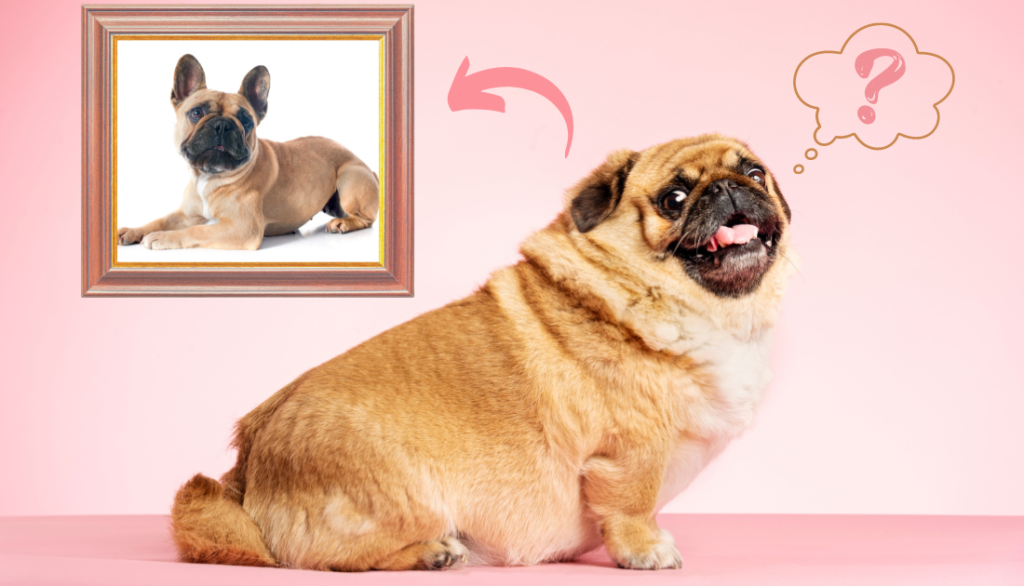
How Do I Know If My Dog Is Overweight?
Every dog is different, and there’s no one healthy weight, even for purebreds with breed standards. Your veterinarian will be able to help you by assessing your dog’s body condition.
According to the World Small Animal Veterinary Association, a dog in ideal body condition will have a visible waist and a thin layer of fat covering the ribs. Many dogs will have a visible abdominal tuck, although this depends on body type; labs and their crossbreeds often do not have a tuck, even at their ideal weight.
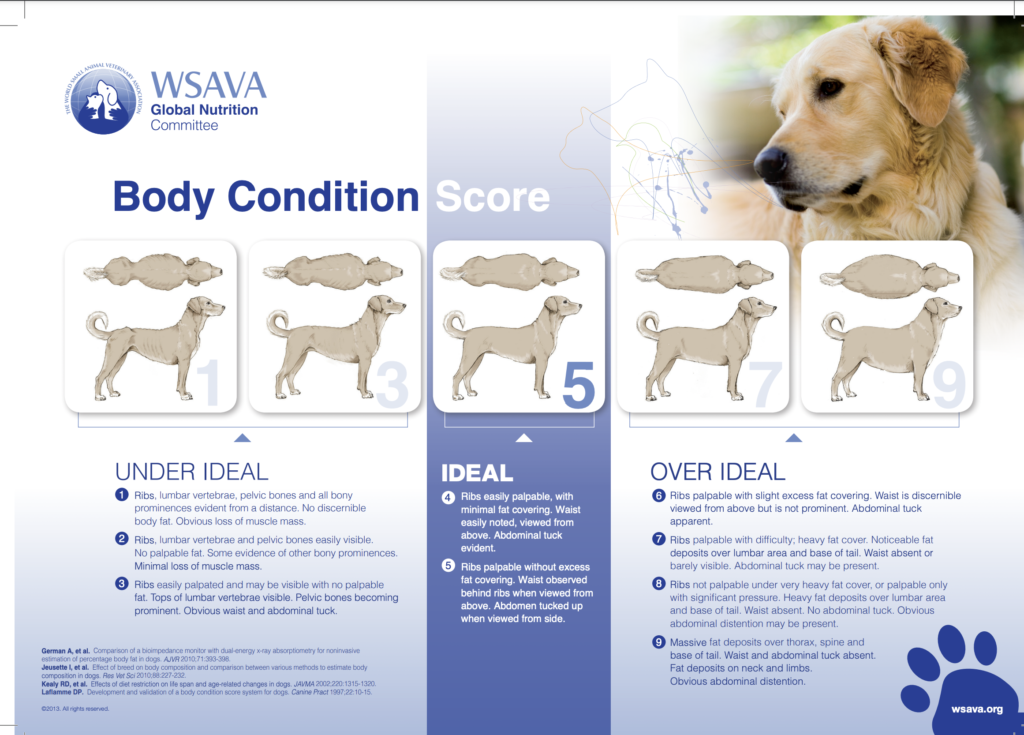
Tips to Lose Weight
Once you’ve established that your dog does need to lose weight, how do you help your dog lose weight?
Tip #1 – Decrease the amount you feed.
Veterinarian Jamie Peyton says that “the most simple place to start is to decrease the amount they’re feeding by 25%. Then monitor each week to ensure they are losing weight.”
Tip #2 – Rethink what you feed your dog, and say no to kibble.
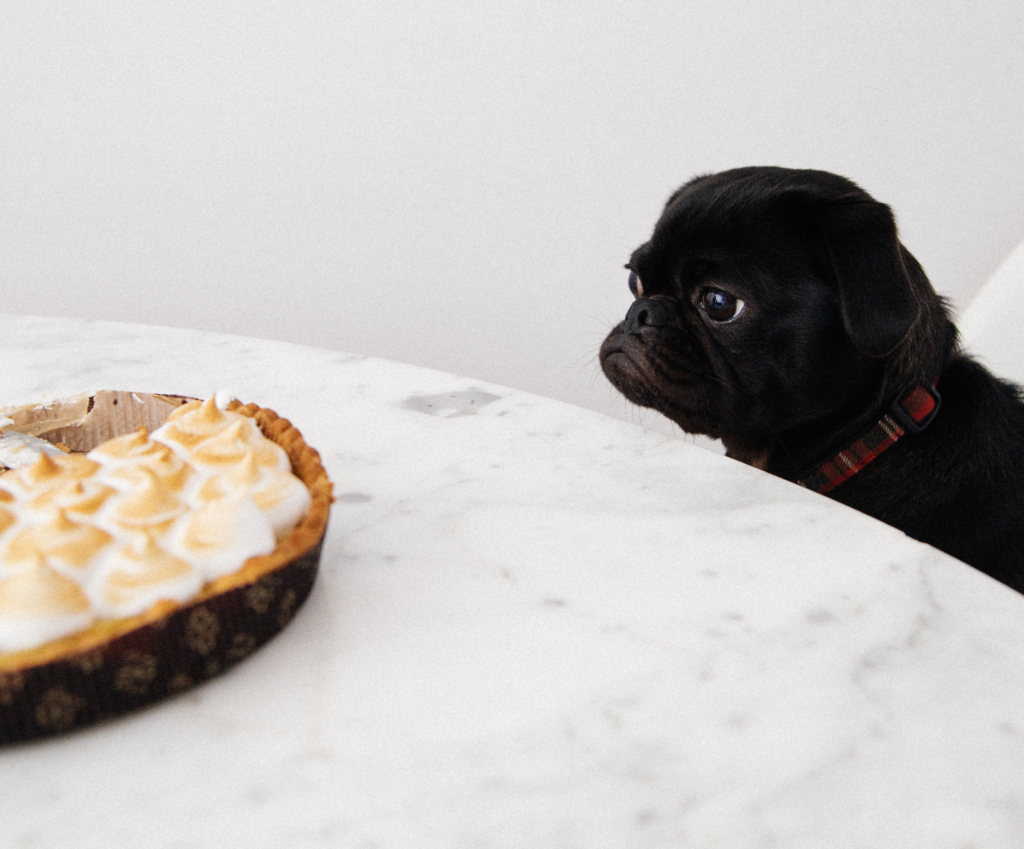
Dr. Peyton explains that “owners should closely examine the food they are feeding and note the calories in each cup. While higher protein and fat foods can increase the calorie content in dog food, they can also increase food satisfaction. Fat takes longer to digest and therefore creates more satiety. The caution with these foods is that you have to feed a smaller amount.”
So basically, you need to rethink how you’re feeding your dog. How many calories are they getting? Are they getting a diet that has lots of carbs? If you feed kibble primarily, you might want to switch partially or entirely to raw, fresh-frozen, or air-dried food.
Be sure to count treats when you calculate the amount of food you feed your dog as well. If your dog is ingesting it, it should be measured!
Tip #3 – Get a slow feeder.

Slow feeders require your dog to chew their food more carefully rather than simply wolfing it down. The benefits to this are two-fold: it increases the amount of chewing your dog will do and decreases your dog’s chances of choking/vomiting. It’s even better if you can order several different ones. Each one has a different pattern so each meal your dog will have to work out how to use it.
Amazon has a good assortment of slow feeders. See them here:
Tip #4 – Increase exercise.
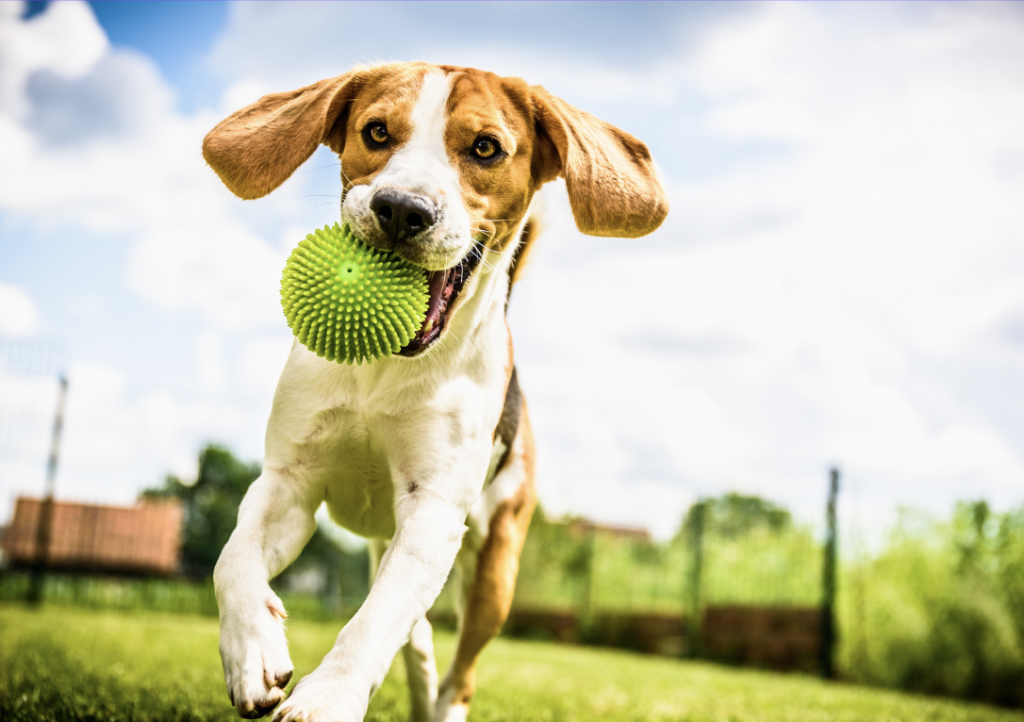
If your dog is already walking the recommended amount of time (20 minutes twice a day), consider boosting that by 10-20%. If you aren’t already walking your dog that often, don’t overwork them by drastically increasing it all at once. Take longer walks in small increments to get them used to it.
Tip #5 – Get a kitchen scale.
Whether you plan to do some home cooking for your overweight dog or need a more reliable way to measure how much you’re feeding them, a kitchen scale is a must. First, go to a feeding calculator to determine how much you should feed your dog. Based on the desired weight and calories of the food you are feeding, it will tell you how many calories per cup or ounce per day.
If you have a kitchen scale you can easily weigh the food to make sure you are not over/under feedling.
Tip #6 – Rule out an underlying medical condition.
If your normally-healthy dog has suddenly put on weight, it could be due to a medical issue. Ask your veterinarian to perform a full examination of your dog to find out if there’s a medical reason for weight gain.
Some of the reasons for weight gain could include:
- Cushing’s syndrome
- Diabetes
- Gastrointestinal issues
- Hyperthyroidism
- Kidney disease
- Liver disease
By asking for an examination, you can rule out these other issues or discover if there is a better diet for your dog’s medical condition.
Tip #7 – Feed based on the weight you want.
Many dog owners make the mistake of feeding their dogs based on their current weight, rather than the weight they want their dog to be. By feeding them according to their ideal weight (consult with a vet if you’re not sure what that should be), you’ll find that they slowly lose the excess pounds they’ve been carrying. Go to a feeding calculator to determine how much you should feed your dog.
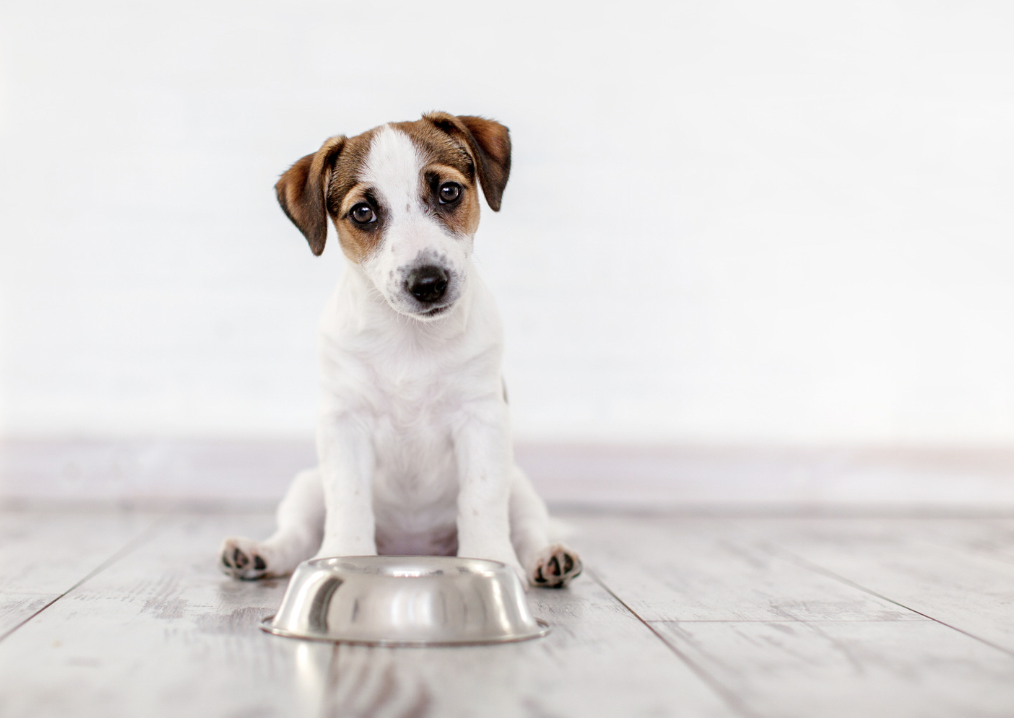
Tip #8 – Multiple Dogs? Be Sure One Dog Is Not Eating Everyone Else’s Food
At my house we have multiple dogs and they all eat at different rates. My overweight dog Buttercup will immediately eat everything in the bowl, while the other dogs prefer to take their time. This poses a challenge, because if I put all 4 bowls down at the same time, Buttercup will eat her portion and everyone else’s. So now, I only put her food down and wait until later to feed the other dogs, when Buttercup is in a different room.
I learned this the hard way as Buttercup kept gaining weight and Cookie was getting skinnier. In a busy household trying to get kids off to school and feed dogs, it’s hard to pay attention to who is eating what.
 Best Dog Food Brands For Dog Weight Loss
Best Dog Food Brands For Dog Weight Loss
When you’re choosing food to help your dog lose weight, you don’t have to switch to something new. If you feed them less of what they are already eating, you will start to see them lose weight.
However, this can affect the number of nutrients your dog gets from their food. Making sure that your dog gets nutrient-rich food is important, so a balanced, complete diet that has nutrients that are easy to digest can help your pet with its weight loss.
The characteristics of a good diet for dog weight loss include:
- Most of the caloric makeup comes from lean protein
- Low amounts of carbohydrates
- Avoidance of “filler” ingredients
- Avoidance of high starch ingredients like rice and potatoes
- Protein that they can easily digest (for some dogs, this means no chicken)
With these characteristics in mind, let’s look at some dog food brands that can help answer the question “How to help my dog lose weight?” while still keeping them happy with their food.
 1. We Feed Raw
1. We Feed Raw
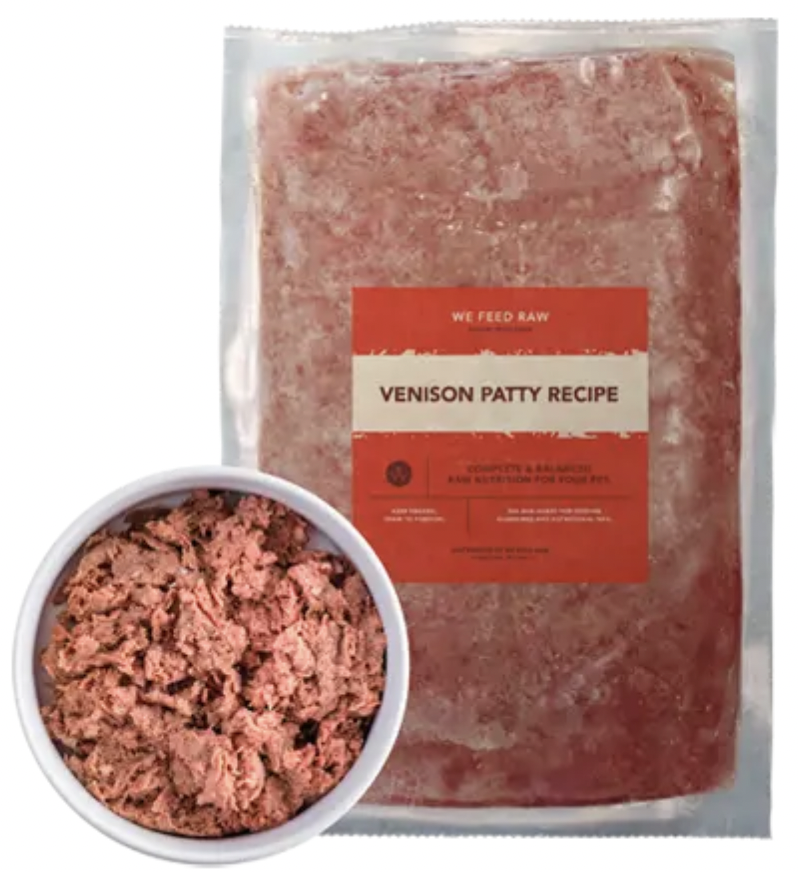
We Feed Raw contains nutritious meat as its main ingredient. This food is good for dog weight loss for several reasons. These include:
- No sugar or carbohydrates of any kind
- Lean protein
- Novel protein sources– dogs with beef or poultry allergies will likely be fine with their venison or lamb recipes

 2. The Farmer’s Dog
2. The Farmer’s Dog
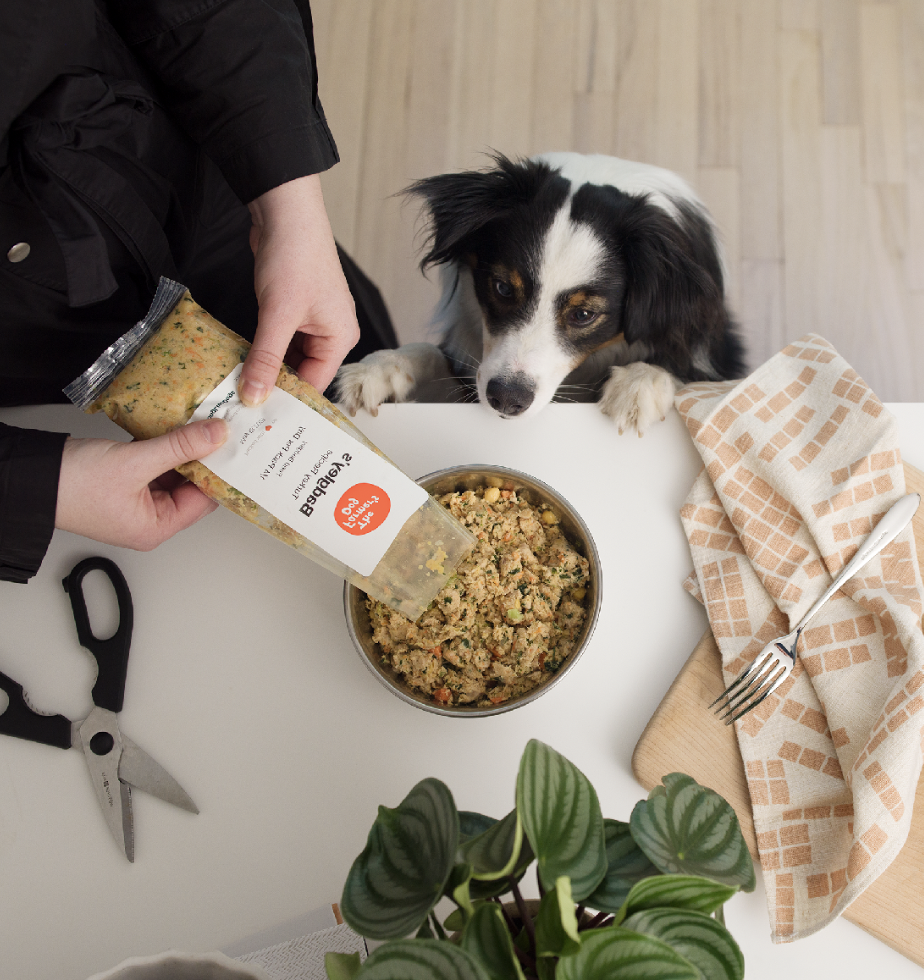
The Farmer’s Dog fresh-frozen food is a favorite of many dogs for its flavor and texture. This food is good for dog weight loss because it has:
- Lean protein
- Nutritious veggies that help with digestion
- Extra omega-3 for joint and cardiac health

 3. Sundays For Dogs
3. Sundays For Dogs
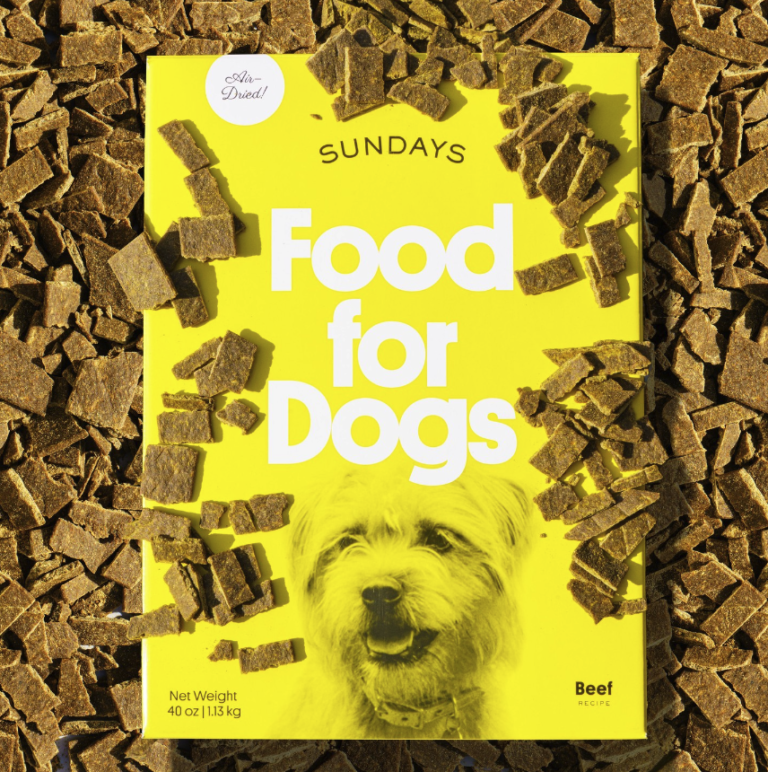
Sundays is an air-dried dog food that uses 100% free-range, antibiotic-free meat and veggies.
This food is good for dog weight loss because it uses:
- Lean and novel protein
- No starch or grains
- Extra superfood boosts
Help Your Dog Lose Weight With Home Cooked Meals
If you want to make your own dog food for weight loss, here’s how! To help dogs lose weight here is a tasty “Puploaf” recipe from veterinarian Dr. Judy Morgan.
| Ingredients |
| 3 pounds 90% lean beef |
| 8 ounces beef heart |
| 5 ounces beef liver |
| 20 ounces chicken gizzards |
| 3 cans of sardines, without the juice |
| 6 ounces mussels or 3 teaspoons kelp for trace minerals |
| 2 teaspoons ground fresh ginger |
| 5 eggs with shell |
| 3 ounces red bell pepper |
| 5 ounces dark leafy greens |
| 4 ounces broccoli |
| 6 ounces butternut squash |
| 3 tablespoons flaxseed oil |
| 4 ounces cranberries |
| 4 ounces shiitake mushrooms |
To make healthy Puploaf, grind and mix all of your ingredients. Pour into pans– muffin pans work great for easy portioning. Bake at 325ºF for 30 to 60 minutes depending on the size of the pan. The loaf should be juicy in the center. If your dog is allergic to beef or chicken, you can substitute turkey. Use within 3 to 5 days; you can freeze the extra portions.
The guidelines for how much homemade dog food to feed for weight loss is that the total amount of food per day should be 2-3% of the dog’s body weight in ounces. Because a 40-pound dog weighs 640 ounces, 12.8 ounces of homemade food per day is good for weight loss. Again, a kitchen scale will help you measure!
Aim for 5% liver, 30% vegetables, and 65% protein for your dog.
Keep in Mind…
Carbohydrates are your enemy if you’re trying to get your dog to lose weight. Avoid rice and grains when cooking for your pup. Instead, choose non-starchy vegetables and lean meats.
If you want to try making up your own recipes, use this tool to make sure it’s a balanced recipe for your dog: You can find it right here.
FAQs
Pet weight management is a complicated subject. Here are some of the questions that pet parents like you have about helping their pets maintain a healthy size.
What is the fastest way for a dog to lose weight?
The fastest way for a dog to lose weight is through a reduced-calorie diet combined with exercise.
How long does it take for a dog to lose weight?
Using the tips in this article, many dogs should be able to come to their ideal weight within six to eight months. If you find it’s still a struggle to get your dog to shed the weight, you will want to return to square one and see what else you can change. Your dog should be able to lose anywhere from one to five pounds each month.
How can I get my dog to lose 10 pounds?
For pet parents wondering “How to get my dog to lose ten pounds,” the answer is to reduce their food intake and monitor their weight each week.
Does walking help a dog lose weight? Can a dog lose weight by walking alone?
Yes, it can. But if your dog is eating too much, it would have to walk an awful lot to burn off the calories. Exercise alone isn’t the best way to help a dog lose weight – but it is a vital part of weight loss if you’re already reducing their intake.
What is the best exercise to help a dog lose weight?
The best exercise to help a dog lose weight is the exercise that your dog can do and enjoys doing. Pick fun activities that are safe and gentle on their joints, like walking, taking them to dog parks, or even bringing them along for a swim.
How to help my dog lose weight in winter?
If it’s winter and the weather is too cold for exercise, that’s ok. Instead, play games with your dog indoors. You can play fetch down the hallway or tug-of-war in the living room! Another rule of thumb is to feed your dog based on the weight you want them to be, not what they currently are, as referenced in this “How to help a dog lose weight” Reddit thread.
What is a good homemade dog diet for weight loss?
If you want to help your dog lose weight by cooking for them, follow a balanced recipe and feed them the appropriate amount of food. See the recipe we shared above for a healthy, nutritionally complete diet that is a perfect way to help a dog lose weight, or make your own using the guidelines we mentioned.
Is there a “How much should I feed my dog to lose weight” calculator?
Yes! You can find it right here.
Related Articles:
- Best Dog Foods for Dogs Who Need To Gain Weight
- 6 Vegan Dog-Food Recipes for Dogs with Meat Allergies
- Best Dog Food For Senior Dogs
- 13 Novel Proteins That Dogs with Allergies & GI Issues Can Eat

